Randy Olson’s new book: “Houston, We Have a Narrative”
Bill Dennison · Randy Olson has really knocked a home run with his latest book, “Houston, we have a narrative: Why science needs story”. Randy’s previous book, “Don’t be such a scientist: Talking substance in an age of style” does a good job defining the problem that most scientists have in communicating complex ideas to wide audiences. But what “Houston, we have a narrative” does that makes this an excellent book is provide workable solutions for scientists to make them better communicators. This really is an excellent self-help book for scientists. Our group of science facilitators, integrators and communicators at the
Randy has also made this book very readable, using humor, real life examples and references popular culture as frequently as referencing scientific literature. The origin of the book’s title is quite clever as well. Randy compares the actual words spoken by Apollo 13 astronaut Jack Swigert: “Houston, we’ve had a problem here.”, with the words used by actor Tom Hanks “Houston, we have a problem.” The subtle difference is the immediacy of the verb “have” vs. “had” and dropping the word “here” to make the statement more concise. Randy advocates the approach of “. . . keeping things accurate yet make them conform better to the constraints of the narrative world in which we live.”
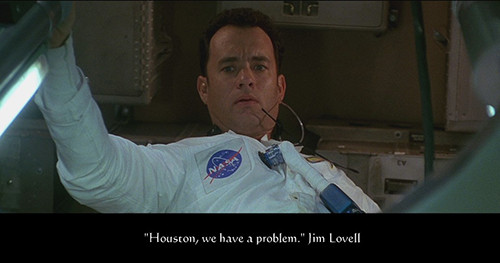
Randy’s central message is that humans are hard-wired for narrative and science needs to employ narrative to be effective. He advocates that scientists combine the intuitive with the rational, which corresponds to my call to combine STUDY (Scientific rigor, Total commitment, Understanding complexity, Developing methodology, Yearning for truth) with SOLVE (Shared vision, Organized and balanced approach, Leadership, Varied communication, Effective actions), using the analogy of connecting the right and left hemispheres of the brain with the corpus callosum nerves.
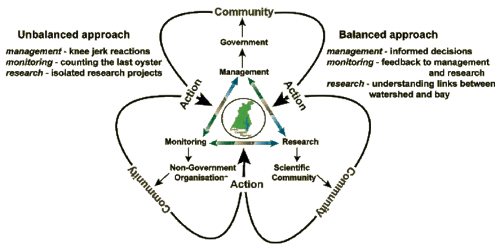
The book is divided into three sections: Thesis, Antithesis and Synthesis, using the Hegelian Dialectic as an organizing theme. The thesis section can be summarized using the “. . . and . . . but . . . therefore . . .” template that Randy has been promoting with the following statement: “Science is stuck in a narrative world AND the humanities ought to help, BUT the humanities are useless for this, THEREFORE Hollywood to the rescue.” Randy references scientific studies on the human brain to illustrate that narrative a) activates the brain more than non-narrative information and b) unifies the thinking of a group of people. He also points out that story-telling from Gilamesh, to the Greek scholars, through the Renaissance is much more ancient than science.
The Antithesis section is the meaty part of the book, describing various narrative tools for words, sentences and paragraphs. The word tool, referred to as the Dobzhansky template, is to fill in the following sentence: “Nothing in ________________makes sense, except in the light of ___________________.” The sentence tool is the previously described ABT tool of using “. . . and . . . but . . . therefore . . .” in describing research findings. The paragraph tool follows the “hero’s journey” described by Joseph Campbell by filling in the following: “In an ordinary world, __________, a flawed character ____________ has a catalytic event __________, which upends his/her world, but after taking stock ____________ the character decides to take action, _____________ but when the stakes get raised ___________ the character must learn the lesson _____________ in order to overcome the opposition ____________and achieve the goal_____________.”
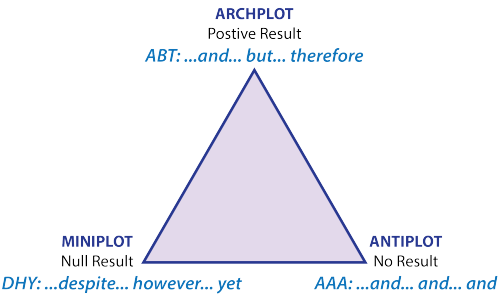
There are three models of story that Randy discusses and illustrates. The preferred ABT (and, but, therefore) is contrasted to the AAA (and, and, and) and the DHY (despite, however, yet) models. I loved the example of Lincoln’s Gettysburg Address conforming into the ABT template. The AAA model provides endless examples and data without establishing tension with the BUT statement or resolving the tension with the THEREFORE statement and is ultimately boring. The DHY model of taking the audience on a random walk tour of distracting details is ultimately confusing. Randy provides a template for shaping an effective ABT statement, by starting with an informational ABT (iABT) which has too much information, following with a conversational ABT (cABT) which has too little information but focuses on the narrative structure and ending with the keeper ABT (kABT) which is the “just right” amount of information in a good narrative structure.
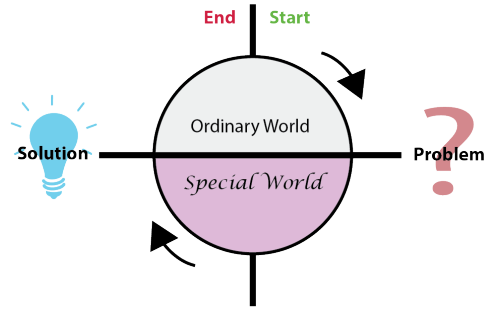
The synthesis section can be summarized using the ABT template, “Science needs story, AND Hollywood can help, BUT narrative training requires a different mindset, THEREFORE I recommend Story Circles.” The Story Circle concept is to a) identify our narrative deficiencies, b) employ narrative training by forming story circles in which small groups meet to review basic elements of narrative, c) develop narrative intuition by practicing through story circles and d) create a narrative culture. IAN already employs a storyboard process to develop science communication products, so the Story Circle approach can be incorporated into the storyboard sessions to insure the storyboards create ABT, rather than AAA or DHY models.
My only edits to Randy’s book would be to create more compelling graphics. Randy uses graphs of the uptake of the IMRAD (Introduction, Methods, Results And Discussion) publication model in biomedical science which has too much “chart junk”, for example. In addition, the simple line graphics used for McKee’s triangle could be enhanced, and the path to narrative competency could be improved.
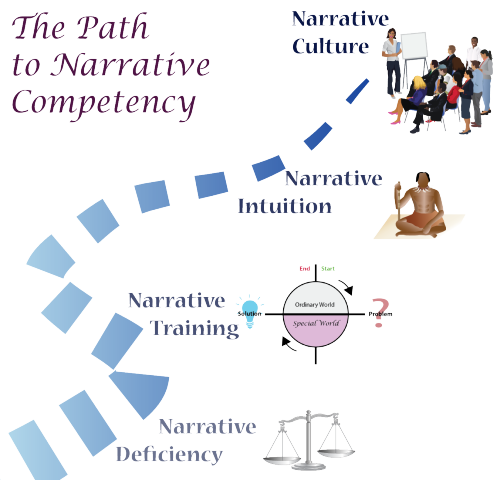
Randy Olson’s book “Houston, we have a narrative” will become standard assigned reading for graduate students and I will recommend it to all of my scientific colleagues. It is powerful, approachable and useful. Well done, Randy.
About the author
Bill Dennison

Dr. Bill Dennison is a Professor of Marine Science and Vice President for Science Application at the University of Maryland Center for Environmental Science.

